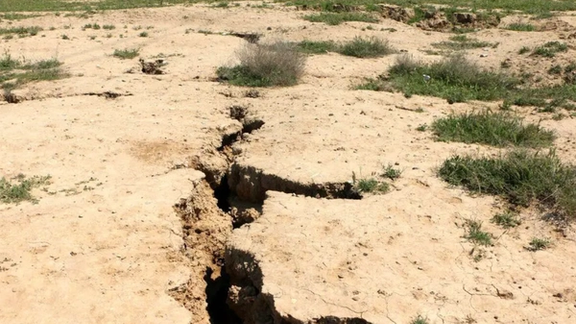Iran facing escalating land subsidence crisis

Iran is confronting a nationwide crisis as land subsidence reaches critical levels in the country, with only one province exempt.

Iran is confronting a nationwide crisis as land subsidence reaches critical levels in the country, with only one province exempt.
Ali Beitollahi, Head of the Engineering Seismology and Risk Department at Iran's University of Science and Technology, warned that despite clear and mounting evidence, policymakers have yet to fully grasp the gravity of this impending catastrophe.
Beitollahi also highlighted the alarming issue of land subsidence affecting Iran’s historical monuments, including Isfahan's Naqsh-e Jahan Square, its ancient mosques, Persepolis, and the Naqsh-e Rostam complex.
He said, “Although published images of subsidence at Naqsh-e Rostam are not entirely accurate, our field inspections confirm the presence of significant cracks due to subsidence.”
He expressed deep concern over the lack of institutional accountability and emphasized that historical monuments and key structures in large cities and subsidence-prone areas urgently require specialized repairs.
Beitollahi further stressed the urgent need for mandatory regulations to address land subsidence, lamenting that no such legislation has yet been enacted. The subsidence crisis has long plagued Persepolis and surrounding ancient sites like Naqsh-e Rostam.
Maryam Dehghani, a faculty member at Shiraz University, remarked last week that subsidence is occurring within 300 to 500 meters of Persepolis and as close as 10 meters to Naqsh-e Rostam, with large, visible cracks forming in these areas.
Beitollahi, who has consistently warned about such dangers, noted in April that the rise in subsidence rates can be partly attributed to “extensive well drilling, which has severely depleted groundwater levels across the country.”
According to the head of the National Cartographic Center, Ali Javidaneh, the average rate of land subsidence in Iran is five times the global average, a phenomenon also affecting vital infrastructure such as airports, roads, and railways.
In September, The Guardian reported that groundwater depletion in Iran is reaching a critical threshold, as revealed by a comprehensive study. This has led to extensive subsidence across vast regions, with satellite imagery showing cracks and sinkholes forming in various parts of the country. In some areas, the land is sinking at over 10 centimeters per year due to excessive groundwater extraction.
The same study highlighted that it could take hundreds, if not thousands, of years for these depleted water resources to naturally replenish.
Last year, reports emerged indicating that the Iranian government had withheld key information regarding the worsening subsidence crisis. In March, Iranian experts classified the situation as "critical," warning that it threatens the lives of over 39 million people.
The crisis is driven by a combination of factors, including dam construction, climate change, inefficient water use in agriculture and industry, and the over-extraction of underground aquifers through illegal wells. These interrelated issues now pose a severe risk to millions across the country.